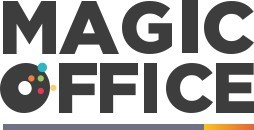
Understanding the Canadian Corporate Innovation Ecosystem
Deciphering the Canadian Corporate Innovation Ecosystem
At the core of Canadian business competitiveness lies its corporate innovation ecosystem—a dynamic environment where collaboration, technology, and forward-thinking strategies merge to drive growth. To understand this complex structure, one must highlight the integral role of supportive governments which have often provided grants, tax incentives, and research and development opportunities. Moreover, Canadian corporations have a longstanding reputation for valuing not only profit but also social responsibility and environmental stewardship, tying in corporate social innovation as a key aspect. Innovation, Science and Economic Development Canada presents significant data that reinforce the benefits of a robust innovation ecosystem on the national economy.
The Pulse of Innovation in Small and Large Enterprises
When we delve into the specifics, the role of small and large enterprises can be seen as the lifeblood of the innovation ecosystem. Small ventures, with their agility and entrepreneurial spirit, often lead groundbreaking changes and introduce cutting-edge ideas, products, and services. Conversely, large corporations contribute by scaling these innovations, providing indispensable resources, and establishing strategic partnerships. According to Statistics Canada, the symbiosis between different-sized entities is crucial for macro and microeconomic growth and continuous innovation.
Recognizing the Convergence of Diverse Industries
The Canadian corporate landscape is characterized by its diversity, with multiple industries from technology to healthcare, contributing to the innovation ecosystem. This convergence facilitates rich interdisciplinary exchanges, leading to breakthroughs that can be applied across market sectors. Industry leaders often cite that the cross-pollination of ideas among various sectors is vital for fostering an environment conducive to innovation.
Innovation Metrics and Benchmarks
For office managers and those in charge of overseeing corporate growth, it is essential to measure and track innovation. This tracking is often done through metrics such as the number of patents filed, research and development spending, or the launch of new products. However, the modern innovation index also includes softer metrics, like employee engagement levels and the implementation of agile management techniques—as we'll discuss in empowering employees—which significantly contribute to an organization's ability to innovate.
Global Connections and Local Distinctions
Canadian corporations are not isolated in their pursuit of innovation; they are part of a global network of businesses striving for distinction and market leadership. Therefore, these entities must navigate not only the complexities of local market demands but also the ever-evolving international standards of business operations and competition. In such a landscape, leveraging technology as a catalyst for innovation and building an office culture centered around continuous improvement are paramount for success.
Key Strategies for Office Managers to Foster Innovation
Unleashing Creativity with Cross-Functional Collaboration
In the heart of the bustling Canadian corporate scene, office managers play a pivotal role in spearheading innovation. Encouraging cross-functional teams can break down silos, fostering a breeding ground for creativity and out-of-the-box thinking. By facilitating brainstorming sessions and cross-departmental projects, office managers can harness diverse perspectives and expertise, leading to breakthroughs that propel the company forward. For example, when marketing experts collaborate with the IT department, the resulting digital campaigns can revolutionize customer engagement.
Optimizing the Physical Workspace for Innovation
The layout and design of a workspace significantly affect creativity and productivity. Office managers looking to boost innovation should consider creating spaces that enhance collaboration, such as open-plan areas, brainstorming rooms, and relaxation zones. The introduction of ergonomic furniture and green spaces also contributes to employee well-being, which is closely linked to their ability to innovate. Statistics show that a well-designed office can increase productivity by up to 20% and promote a healthy, dynamic work environment conducive to generating new ideas.
Championing a Culture of Continuous Learning
Education is the backbone of innovation. Office managers who champion a culture of continuous learning position their teams to stay ahead of industry trends and technological advancements. By providing access to workshops, webinars, and training sessions, managers can cultivate a workforce skilled in the latest best practices. This investment in human capital is crucial, as employees who receive regular training are more likely to contribute innovative solutions and improve office management systems.
Implementing Feedback Mechanisms for Sustained Improvement
Innovation is not a one-off event but a continuous journey. Robust feedback mechanisms are essential for office managers to identify areas needing improvement and to recognize successes. Tools such as employee surveys, suggestion boxes, and regular performance reviews keep the dialogue on innovation open, ensuring that the team collectively moves towards a culture of constant enhancement. This approach not only empowers staff but also aligns with the agile management practices that enable organizations to adapt swiftly to change.
Setting Clear Objectives and Measurable Outcomes
Clear objectives and Key Performance Indicators (KPIs) provide direction and motivate teams to push the boundaries of current processes. Office managers can drive change by setting measurable goals that challenge the status quo and encourage problem-solving. These goals can range from improving office efficiency to hitting sustainability targets or enhancing client satisfaction. By measuring outcomes, managers can quantify their success in stimulating innovation and build on these insights to set future initiatives.
Empowering Employees through Agile Management Techniques
Introducing Agile Methodologies for Enhanced Employee Empowerment
Agile management techniques have revolutionized the way businesses operate, particularly within the dynamic Canadian corporate ecosystem. An office manager's role involves harnessing these techniques to create an environment ripe for innovation. By implementing agile strategies such as Scrum or Kanban, managers can facilitate a workspace where adaptability and employee autonomy are the norms rather than the exception.
- Scrum encourages cross-functional teams to work iteratively on projects in sprints, fostering collaboration and rapid problem-solving.
- Kanban emphasizes workflow visualization, enabling teams to manage complex tasks and prioritize effectively.
Statistics show that agile projects are 28% more successful than traditional projects, according to the Project Management Institute. This success rate underscores the value of agile methodologies in driving workplace innovation.
Encouraging Risk-Taking and Rapid Iteration
For Canadian office managers looking to instill innovative thinking, it is essential to create a safe space for risk-taking. Encouraging employees to experiment and learn from failures without fear of repercussions can result in ground-breaking ideas and solutions. Agile management underpins this approach by emphasizing the importance of iteration—a cycle of testing, feedback, and improvement.
Through frequent sprint retrospectives, teams have the opportunity to reflect on what worked, what didn't, and how to enhance processes. This constant cycle of evaluation and adaptation is a key driver in cultivating a robust innovation pipeline within the office.
Empowering Teams with Self-Management
In the heart of innovation lies the ability of employees to take charge of their tasks and projects. Self-management is a principle of agile methodologies that entrusts team members with decision-making power, thus promoting a sense of ownership and responsibility. Empowered employees are more engaged and motivated to push boundaries and innovate.
By adopting agile tools and practices, office managers can create a fluid structure where teams can self-organize around tasks that match their skills and interests, leading to more efficient project completion and a more innovative office atmosphere.
Optimizing Resource Allocation for Innovation Projects
Resource allocation is another area where agile management excels. Office managers can leverage agile practices to ensure that resources—whether time, talent, or budget—are invested in the most promising innovation initiatives.
Through techniques like backlog prioritization and sprint planning, managers can allocate resources strategically to sustain an environment conducive to innovation. This not only optimizes office operations but also maximizes the potential for innovative outcomes that can redefine the company's competitive edge in the market.
Leveraging Technology to Drive Innovation in Office Management
Embracing the Digital Revolution for Enhanced Office Productivity
In today's fast-paced business environment, offices must be equipped with cutting-edge tools to stay ahead of the curve. Office managers play a pivotal role in integrating technology to drive innovation in their organizations. One of the most effective strategies is to implement project management platforms that streamline workflow and collaboration across departments, resulting in increased efficiency and the ability to react quickly to shifting market demands.
Smart Automation of Administrative Tasks
Automation is key to optimizing office operations and allowing staff to focus on high-value tasks that require creative thinking and strategic planning. By automating mundane processes such as data entry, appointment scheduling, and invoice management, office managers can minimize human errors and free up time for their teams to engage in more innovative and impactful work. Utilizing intelligent software not only increases productivity but also fosters innovation by encouraging employees to explore new technological solutions.
Advancing Communication with Unified Platforms
Effective communication is the backbone of a thriving corporate office. Leveraging unified communications technology consolidates various communication tools into one platform, ensuring that employees can collaborate seamlessly, regardless of their location. This synergy not only enhances teamwork but also sparks creative innovation by providing a shared space for ideas to grow and develop.
Data-Driven Decision Making for Office Managers
The power of data cannot be overstated when it comes to promoting innovation within an office setting. Office managers equipped with analytical tools can harness the power of big data to gain insights into employee performance, customer behaviors, and operational efficiencies. These insights allow for informed decisions that can lead to improved processes and the development of new, innovative strategies tailored to the unique needs of the Canadian corporate sector.
Enhancing the Employee Experience with Tech-Driven Tools
Lastly, innovation isn't just about processes; it's about people. By introducing technology that improves the workspace, such as ergonomics software that suggests optimal desk setups or wellness apps that remind employees to take breaks and stay hydrated, office managers create a more health-conscious, engaged, and ultimately more innovative workforce. Prioritizing the well-being of employees not only boosts morale but also fosters a culture where innovation is part of the daily fabric of office life.
Building an Innovation-Centric Culture Within the Office
Incubating a Forward-Thinking Office Environment
Fostering an office culture that breathes innovation requires a deliberate and sustained effort. It starts with leadership's commitment to championing creative thought and action. By showcasing an unwavering support for out-of-the-box ideas and calculated risks, office managers set the precedent for an innovative office atmosphere. Statistical evidence from leading corporate studies suggests that companies with an innovation-centric culture report higher employee satisfaction, which in turn fuels continuous improvement and growth.
Cultivating Collaborative Spaces for Creative Synergies
Collaboration is the cornerstone of innovation. By creating physical and virtual spaces where team members can share ideas and collaborate, office managers can spark a synergy that drives innovation. Open floor plans, communal lounges, and versatile meeting rooms, along with collaboration software, are some of the infrastructural enhancements that can support a robust exchange of ideas.
Innovative Mindset: The Heart of Change
An innovative mindset across all levels is essential for driving change. This means fostering a work culture where each team member is encouraged to question the status quo and propose new solutions. When an office manager encourages an environment where failure is seen as a learning opportunity, it empowers employees to take initiative and experiment without fear. Regular workshops, brainstorming sessions, and innovation challenges can keep the creative juices flowing and encourage everyone to contribute to the office’s innovative journey.
Recognition and Reward: Fueling the Innovation Engine
Acknowledging and rewarding creative efforts and innovative results are crucial for maintaining momentum in innovation practices. When employees see their ideas are valued and have tangible outcomes, it instills a sense of ownership and motivates further innovation. Office managers should consider establishing an 'Innovation of the Month' program or similar initiatives to highlight and celebrate these achievements.
Continual Learning: The Pathway to Innovation Mastery
In the pursuit of innovation, knowledge is power. Continuous learning opportunities such as conferences, seminars, and online courses can keep the team updated on the latest industry trends and techniques. When office managers invest in their team’s education, they are not just upskilling their workforce – they are molding the thought leaders of tomorrow who will continue to drive innovation forward within the corporate landscape of Canada.

